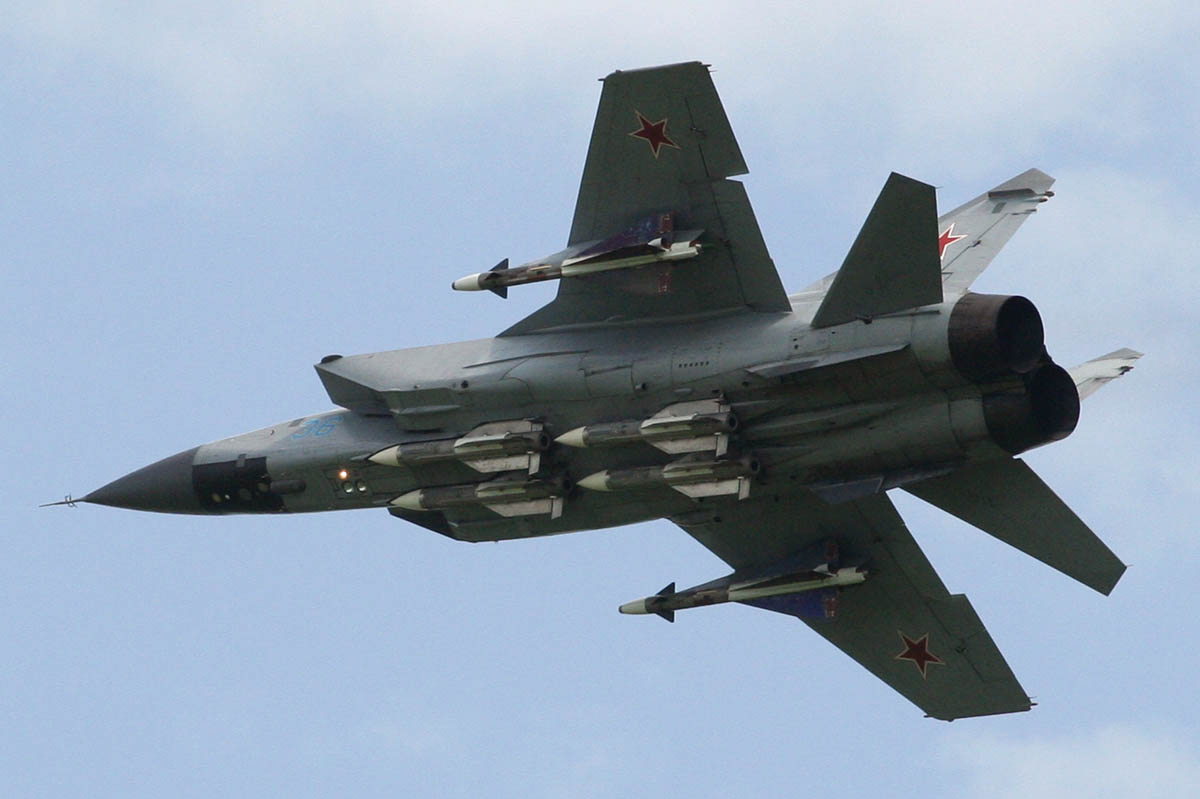- Beranda
- Komunitas
- News
- Militer
(tanya) mengapa MIG-31 masih menggunakan AA-6 ACRID R-40 dan R-60 AA-8 'Aphid?
TS
letnan.bejo
(tanya) mengapa MIG-31 masih menggunakan AA-6 ACRID R-40 dan R-60 AA-8 'Aphid?

In early 1962 the Bisnovat design team began working on the R-40 (K-40), a new long-range missile intended for use with the the MiG-25-40 high- altitude interception system, consisting of the MiG-25 aircraft with Smerch-A radar set and the R-40 missile. Though only slightly larger than the predecessor R-4, the range of the R-40 is over three times greater. This missile was produced in two variants: R-40R (Object RD46 with PARG-12 head) and R-40T (Object TG-46).
After the defection of a MiG-25P to Japan on 06 September 1976, an extensive redesign of the aircraft was undertaken, resulting in the MiG-25PD interception system. Instead of the Smerch-A, a Sapfir-25 radar was installed. The new missile R-40D and its R-40D1 update ("dorabotanaya" [more elaborate]) were produced in two variants R-40RD and R-40TD, both featuring improved countermeasures resistance and a more sensitive homing head to improve performance against low-flying targets. The R-40D1 missile was developed by the Vympel team, the Molniya team having by that time withdraw from development of aircraft missiles. The R-40 is still included among the weapons of MiG-25 and MiG-31 aircraft, although production was discontinued in 1991.
http://fas.org/man/dod-101/sys/missi...e/row/aa-6.htm
+++++++++++++++++++++++++++++++++++++++++++++++++++++++++++++++++++++++++++++++++++++++++++++

AA-8 APHID
K-60 (R-60, Object 62)

Toward the end of the 1960s the Molniya design bureau begin working on the first missile for tactical air combat, the K-60 (R-60, Object 62), with infrared self-guidance. Series production of this missile began in 1973, with the R-60 missile being certified as a weapon for a variety combat aircraft.
The R-60 missile is an unusually small missile, weighing half as much as the lightest Western missiles, with a correspondingly small warhead which weighs barely 3.5 kg). The R-60 on attack aircraft such as the MiG-27, Su-24 or Su-25 serves as a self-defense missile, and on fighter aircraft such as the MiG-23, MiG-25, and Su-15 it is occasionally used as a supplementary missile. The R-60 missile had an unusually short development time, with only four years passing from the beginning of its design to the beginning of its production -- the normal development process of Soviet air-to-air missiles typically required 8 to 9 years. This rapid development was facilitated by the availability of a wealth of experimental data on the K-13 missile, and no new research was done for the R-60. Further developments of the R-60 include the R-60M missile, the export variant R-60MK, and the UZR-60 training version.
http://fas.org/man/dod-101/sys/missi...e/row/aa-8.htm
==================================================================================================
kenapa mereka masih menggunakan produk aa-6 dan aa-8 padahal sdh ada aa-9 dan aa-11 pada mig-31 nya?
apakah karena masih sakti atau hanya ingin menghabiskan stok yg ada?atau mungkin yg dipasang adalah versi tercanggihnya?
0
4.7K
4
Thread Digembok
Urutan
Terbaru
Terlama
Thread Digembok
Komunitas Pilihan